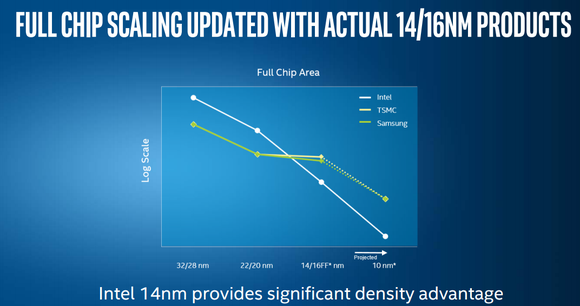- Mar 10, 2006
- 11,715
- 2,012
- 126
From the IEDM 2016 program
So HD SRAM cell size on TSMC 7nm is 0.027um^2, roughly a 2.6x shrink from 16FF+ (0.07um^2).
Intel needs to shrink its 10nm process by a factor of 0.53x or better to maintain density leadership. But it does look like TSMC 7nm ~= Intel 10nm in terms of density.
A 7nm CMOS Platform Technology Featuring 4th Generation FinFET Transistors with a 0.027um2 High Density 6-T SRAM cell for Mobile SoC Applications (Late News)
So HD SRAM cell size on TSMC 7nm is 0.027um^2, roughly a 2.6x shrink from 16FF+ (0.07um^2).
Intel needs to shrink its 10nm process by a factor of 0.53x or better to maintain density leadership. But it does look like TSMC 7nm ~= Intel 10nm in terms of density.



